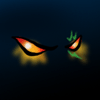What is fun exactly, how do we define it? Raph Koster wrote a great book about this in a book similarly titled A Theory of Fun in Game Design. He discusses many points which are extremely interesting and thought provoking.Such as how game designers or similarly titled roles in the industry, should be working not only to create the juvenile sci-fi/fantasy stories of young person becomes the hero and attempts to save the world and/or defeat the evil enemy. Instead we should be discussing and exploring different avenues of the human psyche.
My take on what he means is that games are not just for children with their juvenile stories, although they definitely have their place, instead as the industry grows and matures, so should the way games present their ideas and possibly be used as a social commentary for today's social climate. This should bring us very close, and rightly so, to the argument of Video Games as Art. Are they art, or just a children's toy? I feel they can be an art form, but we aren't there yet. We have to be able to break the social stigma that video games have to have story, plot, and be extremely goal oriented in order to be fun. Instead, look at games such as Brain Age, Wii Fit, and the like. These are things that video games should have been doing long ago, but they can also be improved upon dramatically.
Wii fit being my primary example, we can that existing underlying layer and create a potential backbone for something more. For example, now that we know Wii fit can be and is quite popular with the general masses, we can create a launching platform for an electronic personal trainer who can suggest excercises and other video games that can help with weight loss, strength building, or other facets of personal fitness. Things like DDR can have hooks with the Wii architecture which allow the Wii to track who, how long, and how many calories burned while said person played.
I personally don't know if it would be as well recieved, but it could be a very nice feature for people who have personal goals to do it in a more personal and potentially more fun environment. Thats it for today I think.
~Xi
Monday, November 24, 2008
Subscribe to:
Post Comments (Atom)

I don't quite follow how you make the jump from video games being art and Wii fit. In fact to be honest I'm not sure what point this topic is trying to make in general.
ReplyDeleteWoops I guess I completely gleaned over writing about the article that sparked the topic.
ReplyDeletehttp://www.gameinformer.com/News/Story/200811/N08.1114.1700.28177.htm
Makes a little more sense now after going through the article. Somewhat related to your expanding the market post with these "non-games" being introduced to appeal to a wider audience.
ReplyDeletePeople are still making unskippable cutscenes. Thinking of videogames as art is what got us into this mess to begin with.
ReplyDeleteIt can be done, but it has to be done on the medium's own terms. There will never be a truly great novel based sincerely on an action movie.
Satirically, /maybe/. But probably not.
Same basic principle, here. If you want to make a game as art, a good place to start might be to abolish every part of it that is not a game. Half-Life is one of the few modern examples of this. Originally, it was the norm: beyond a main menu, there's nothing but playtime.
I would get rid of the main menu.
I'm not saying they have to be large grandiose game like Gears of War or Metal Gear Solid. I'm saying more popular Flash games, Minigames on the Wiiware, PSN, or XBLA and now XNA indie dev.
ReplyDeleteGames like this: http://www.playauditorium.com/
Which are visually and audibly a masterpiece without losing its "Gamey-ness"